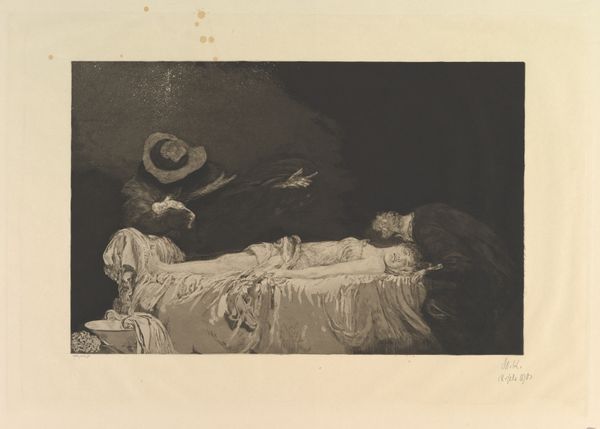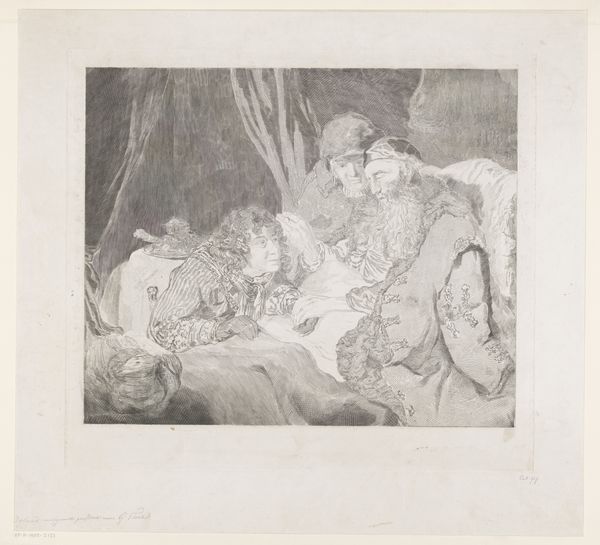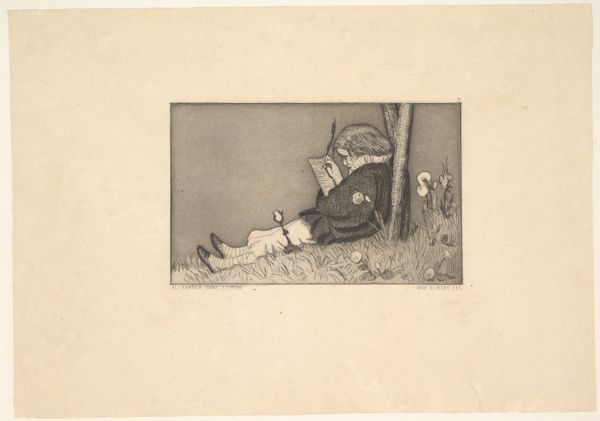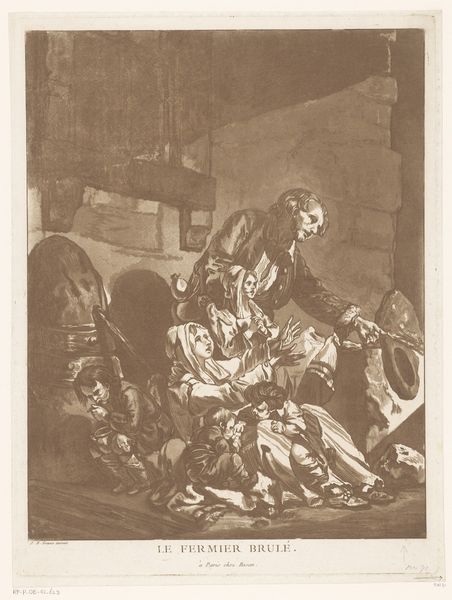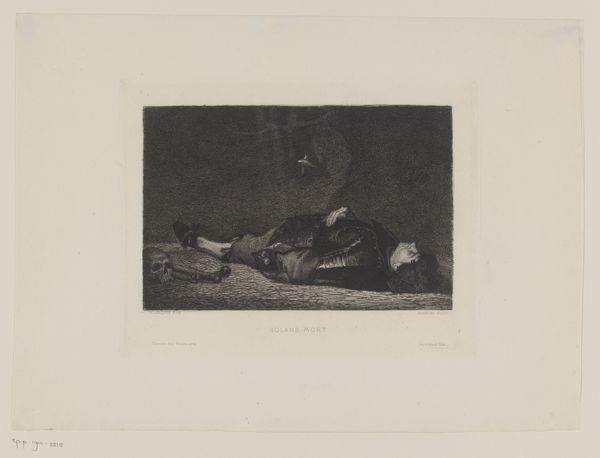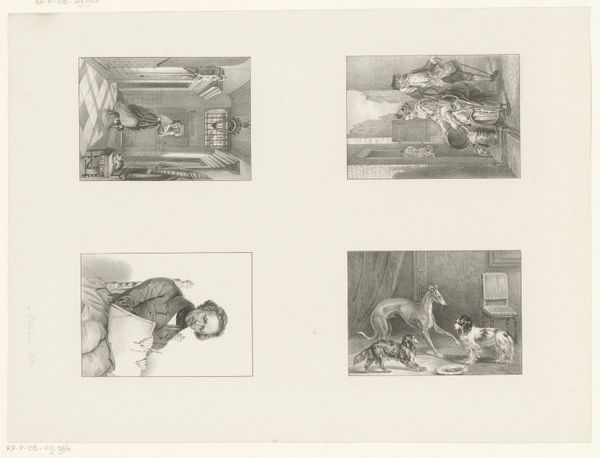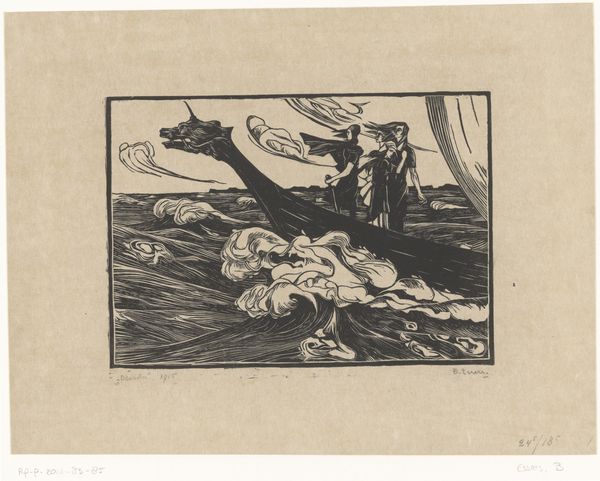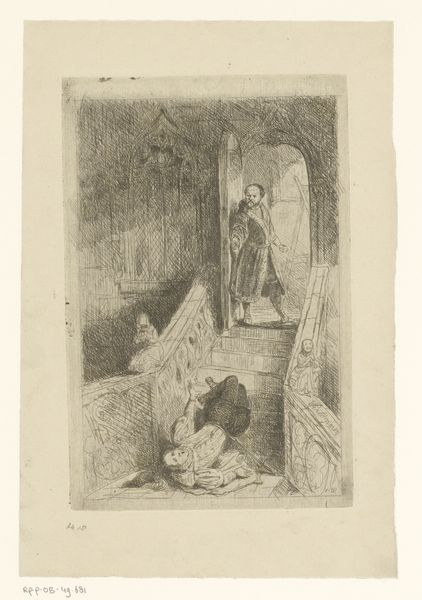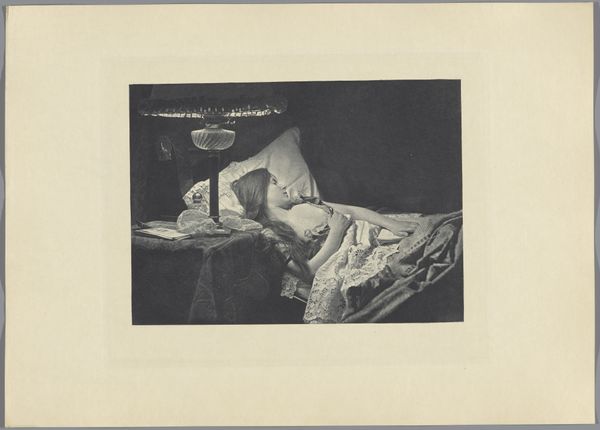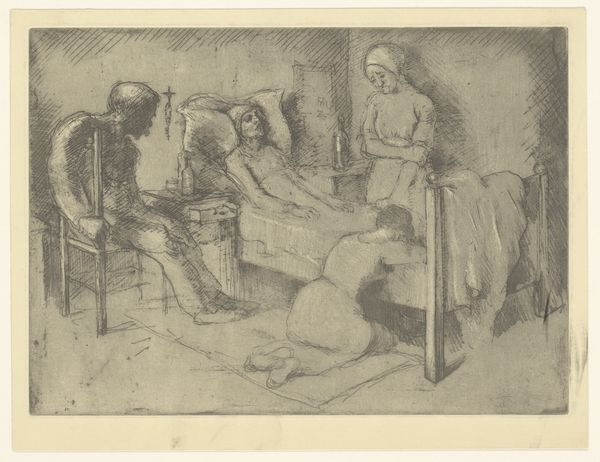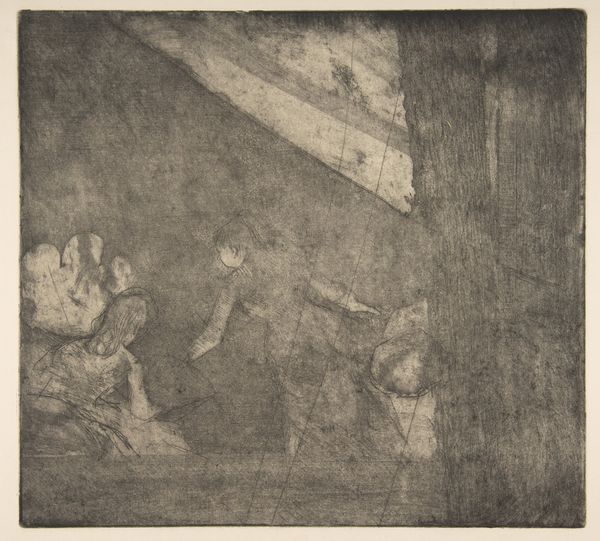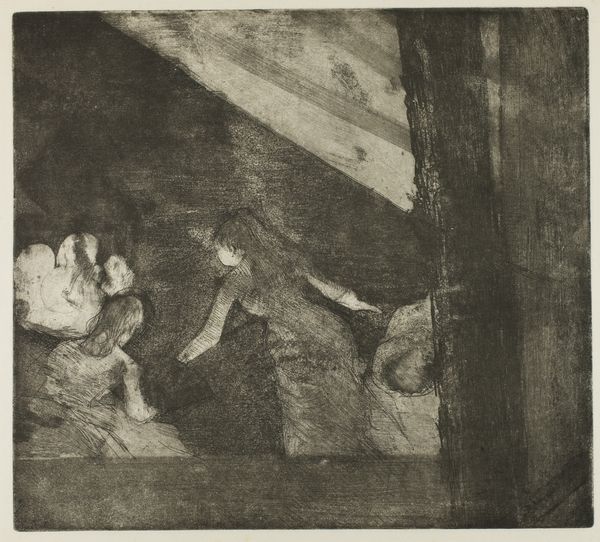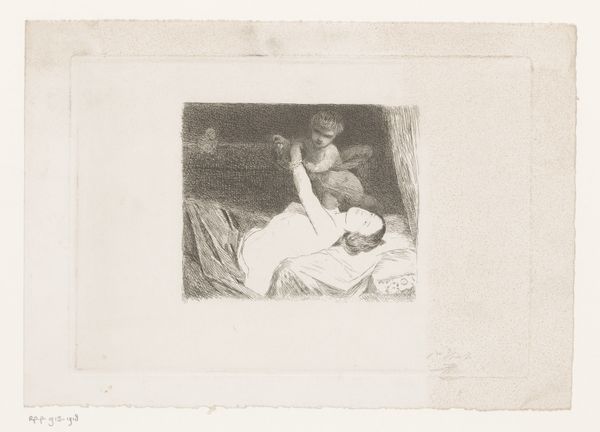
drawing, print, etching
#
portrait
#
drawing
#
narrative-art
# print
#
etching
#
romanticism
#
history-painting
#
realism
Dimensions: Image: 11 7/16 x 9 5/16 in. (29 x 23.6 cm) Sheet: 13 5/16 x 10 7/8 in. (33.8 x 27.6 cm)
Copyright: Public Domain
Curator: Right now, we're looking at "Interior of a Military Hospital," an etching by Eugène Delacroix, likely created between 1820 and 1828. It's currently held at the Metropolitan Museum of Art. Editor: Ugh. Stark. Bleak. It hits you immediately with the grays and blacks. Like wading into a damp, dimly lit cellar. Curator: It's a powerful representation of Romanticism's engagement with realism, especially depicting somber social conditions and a clear interest in narrative. The artist pulls no punches here. Editor: True. The stark contrast enhances that, doesn't it? The dark background against those almost ghostly figures on the beds... Gives me the chills. It's like witnessing something profoundly intimate, yet distant. Curator: Delacroix’s choice of a military hospital interior exposes the consequences of warfare and human suffering—themes prevalent in Romantic art—but with a decidedly Realist focus on the specific details. How suffering is rendered, received, and internalized, even. Editor: You said it. The figure tending to someone—perhaps a nurse or family member—has this deeply etched face, etched, just like the artwork, suggesting resilience maybe? The stoic nature of enduring even within despair. Curator: Exactly. The context of post-Napoleonic Europe also colors this piece, where society was reckoning with immense losses and widespread poverty. This print could also be considered a subtle critique of militarism, subtly questioning glory, rather than just portraying it. Editor: So, it isn’t just a scene; it's a commentary, layered with grief and critique of broader structures, masked under what can initially come across as a simple, dark room. I can see how the museum setting impacts our understanding, bringing context but also a layer of detachment. Curator: Indeed. It prompts the audience to confront uncomfortable realities often glossed over in history books, encouraging both contemplation and engagement. Editor: Yes. Ultimately it's one of those pieces you don't just look at. It makes you feel. Curator: Precisely. Delacroix’s intimate, empathetic representation elevates what would otherwise be a scene of despair to something resonant, prompting dialogues far beyond the historical frame of creation. Editor: Definitely leaves a lasting mark. Like a lingering shadow of understanding of what someone went through.
Comments
No comments
Be the first to comment and join the conversation on the ultimate creative platform.
